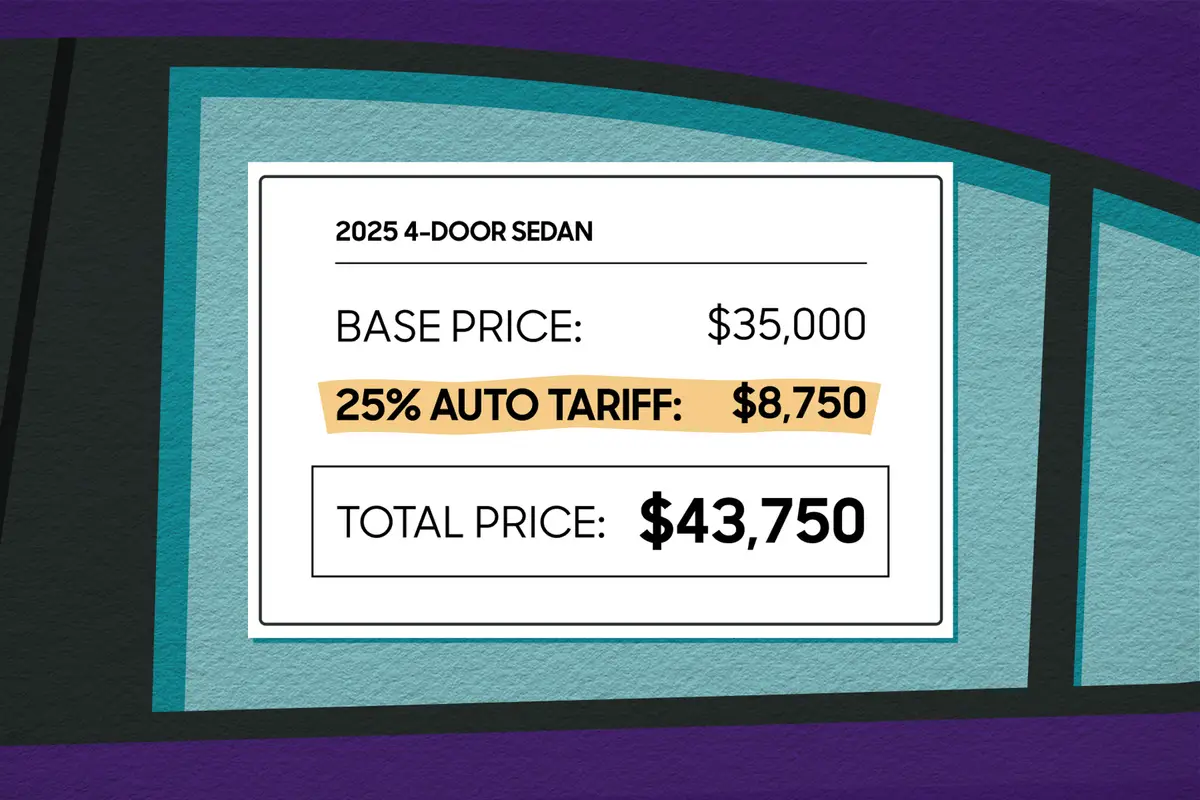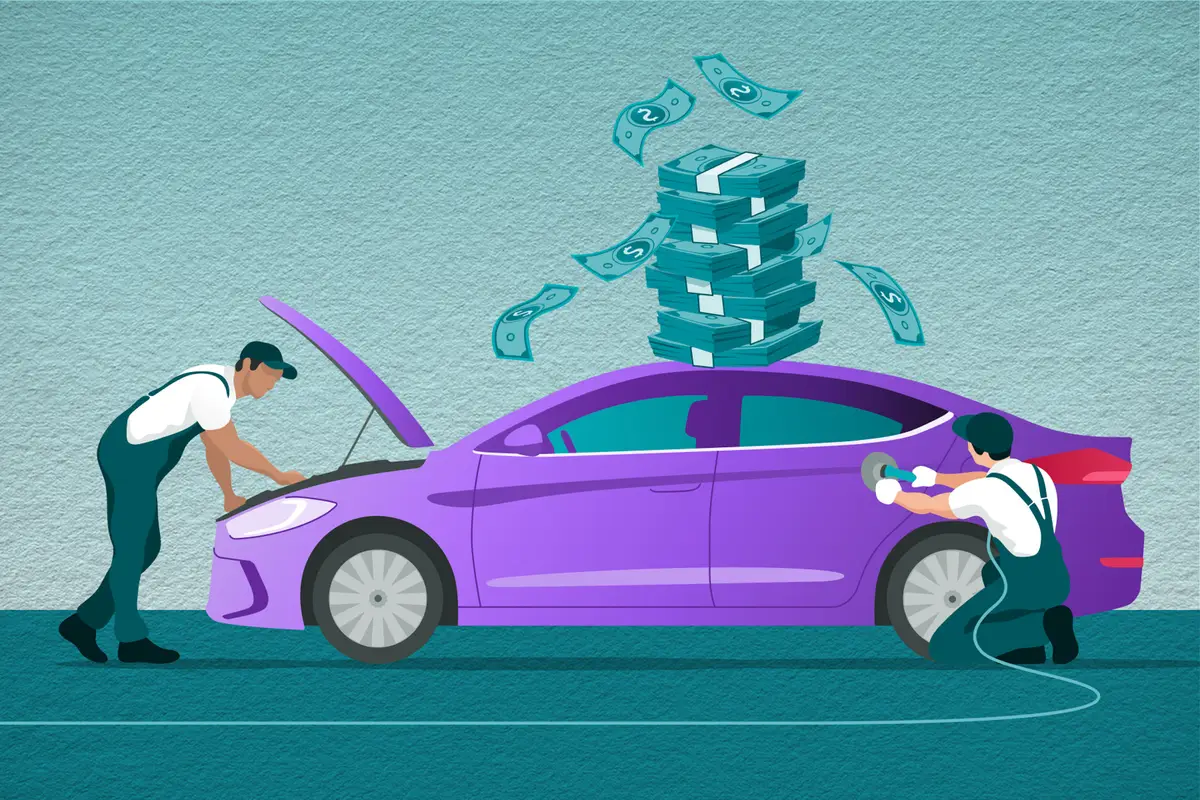chicagotribune.com's view
A 3,800-pound life vest!
That’s what the Aurora sedan proved to be for Oldsmobile in saving a foundering automaker carrying too much out-of-date baggage.
When Aurora came out in 1994, it gave Olds a car to attract new customers and win back some old ones along with the time needed to remove the aged slackers in the lineup that all fell under the “Your father’s” designation.
Aurora has never sold in huge numbers, only about 150,000 copies total since ’94. But as Olds’ flagship, Aurora proved that when given the freedom, its engineers and designers had enough talent to create an appealing vehicle that didn’t look or act like anyone’s father’s car.
The 2001 Aurora now on sale has been revamped, with a new look, new dimensions and the choice of V-6 or V-8 versions.
“Aurora is still our flagship, but is leaner, cleaner and lighter, a true entry-level luxury car that was a bit too big before,” said Douglass Stott, assistant brand manager for Aurora.
The 2001 Aurora is now built on the same platform as the Cadillac Seville, Buick LeSabre and Pontiac Bonneville. The wheelbase is shorter than before (112.2 inches versus 114.3) as is overall length (199.3 inches versus 205), yet cabin room stayed the same.
Shorter dimensions were a concession to younger buyers to whom big means bulky as well as women demanding a vehicle that’s easy to park and garage without sacrificing head, leg or arm room.
Stylewise, the most noticeable change is that the half moon, or arched deck lid with a horizontal lamp across the back, has been raised and flattened and giant taillamps have been stuck in the corners to make the vehicle look wider for the perception that you won’t feel confined once inside.
The design change also widened the trunk opening and lowered lift-over height, just what the luggage and golf clubs needed, though if the opening was just a shade bigger it would make it even easier to store/remove the clubs.
Aurora has been offered only with a 4-liter V-8. For 2001 it boasts two editions, one with a 3.5-liter, 215-horsepower V-6, same engine offered in the Olds Intrigue, and one with the 4-liter, 250-h.p. V-8.
The only differences in the two, Olds says, are engines, wheels and tires–with the V-6 coming with 16-inch tires, the V-8 17-inchers.
After testing the V-6 and V-8 versions, we don’t buy Olds’ claim about engines, wheels and tires as the only differences between the cars.
For example, both cars share the same suspension, which has been upgraded with stiffer springs and retuned shocks to minimize body roll or lean and allow the car to sit flatter in corners and turns to feel more agile. The suspension also reduces much of the road harshness fed back into the wheel in the previous model.
But you still feel that the car has a different personality based on whether a V-6 or V-8 is under the hood.
“The new size–and 160 fewer pounds–makes Aurora feel lighter and more alert and gives it better ride and handling,” Stott said.
And less bulky, easier to maneuver and quicker to respond to pedal and steering-wheel input–especially with the V-8.
When you opt for the V-8, you get wider-asp ect 17-inc h radials for improved steering response and more sure-footed handling; with the V-6 you get 16-inch radials that focus more on pleasant ride than optimum handling. Anti-lock brakes are standard in both.
One major difference is that Aurora with V-8 comes with Buick’s Precision Control System (PCS) and traction control that uses engine torque reduction as well as ABS application to minimize wheel spin and slippage as standard. With V-6, PCS and traction control are a $575 option.
PCS is another name for Cadillac’s StabiliTrak. It uses sensors and a central microprocessor to enhance cornering stability in potential problems, such as taking that turn too fast. The sensors engage the inside or outside front brake to correct your course without front or rear end wanting to go in a direction of its own.
There are other differences between the V-6 and V-8, such as base price and standard equipment levels but also in such minor items as a one gallon smaller fuel tank with the V-8 to conserve weight.
Not too many noticeable shortcomings, though if engineers and designers want to get a head start on changes needed, they should focus on expanding door openings to make it easier to enter/exit.
Aurora with V-6 starts at $30,130, with V-8 at $34,305, about $2,000 less than the current model despite more standard equipment, such as PCS and traction control plus 17-inch wheels and tires.
Standard equipment in V-6 and V-8 versions includes ABS, dual front- and side-impact air bags, leather seats, power driver’s seat, cruise control, steering-wheel controls for radio and air conditioner, remote keyless entry, power outside mirrors with defoggers, front and rear fog lamps, tire inflation monitor, rear seat pass-through to trunk and AM/FM stereo radio with CD player and cassette.
The V-8 adds dual-zone air conditioning, rain-sensing windshield wipers, power driver/passenger seats and memory settings for driver’s seat and mirrors.
OnStar, GM’s emergency communications system, will be added as standard with units built in late July or early August (yes, the price will go up to take this into account). About mid-dash you’ll also notice a chunk of space apparently serving no useful purpose. That is being saved for a navigation system.
To either the V-6 or V-8 add $670 in freight, a significant amount, which makes it appear Olds was able to recoup at least some of the $2,000 savings by bumping up the freight charge.
Olds expects the 2001 Aurora to double its annual sales to about 50,000 units a year. Again, not big numbers, but significant, said Olds general manager Karen Francis, in that nearly 50 percent of all Aurora buyers trade in a non-GM vehicle.
And, if a $30,000 to $35,000 Aurora is too much, Olds has the $24,000 Intrigue.
With the new Aurora, Olds has completed the remake of its product line. Gone are the 88, 98, Ciera, Achieva and Cutlass namep lates, though, rumor has it, the automaker would like to come up with a vehicle to carry the Cutlass name because it has considerable recognition with the public.
The next new vehicle coming is the redesigned Bravada sport-utility in January as a 2002 model.
>> 2001 Oldsmobile Aurora V-8 Wheelbase: 112.2 inches Length: 199.3 inches Engine: 4-liter, 250-h.p. V-8 Transmission: 4-speed automatic Fuel economy: 17 m.p.g. city/25 m.p.g. highway Base price: $34,305 Price as tested: Not available. Add $670 for freight. Pluses: Styling and engineering upgrade of the original Aurora from the 1994 model year on a smaller, more-manageable platform. Choice of V-6 or V-8 engines. Improved ride and handling thanks to retuned suspension and steering and larger 17-inch tires. Traction and st ability control standard with V-8, optional with V-6. Rain-sensing wipers. Minuses: Could use wider-opening doors. Heat/air directional controls hard to see. Not very big opening to put things in or take them out of the trunk. Not exactly eye-popping styling. >>
Latest news



